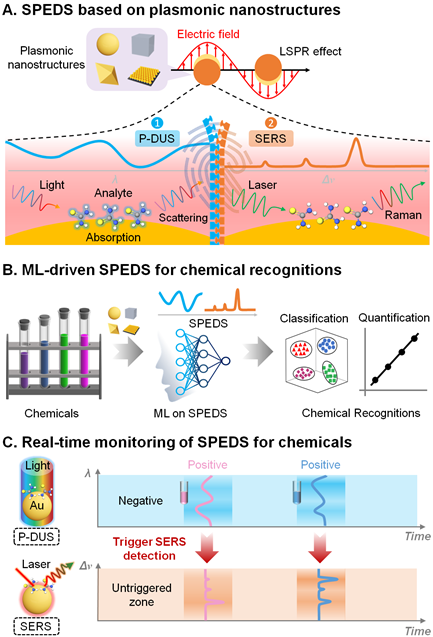
A research team from the Institute of Solid State Physics, the Hefei Institutes of Physical Science of the Chinese Academy of Sciences, has developed a new sensing platform that significantly enhances the precision and speed of hazardous chemical detection in complex real-world environments.
The study was recently published in Analytical Chemistry.
Accurate and rapid detection of hazardous chemicals is crucial for minimizing risks in industrial production, ensuring public health, and addressing environmental contamination. However, real-time, highly specific, and sensitive monitoring in dynamic and complex settings has long posed a technical challenge for the scientific community.
To address this gap, the researchers introduced an innovative sensing strategy—Surface Plasmon-Enhanced Dual Spectroscopy (SPEDS)—which combines two powerful and complementary spectroscopic techniques: Surface-Enhanced Raman Spectroscopy (SERS) and Plasmon-mediated Differential UV–Vis Spectroscopy (P-DUS). This hybrid approach leverages the strengths of both methods, enabling the platform to achieve molecular-level specificity while maintaining real-time responsiveness.
"SPEDS not only improves detection sensitivity but also significantly expands the scope of detectable substances," said Associate Prof. BAO Haoming, who led the team, "With the integration of machine learning algorithms, we achieved over 98% accuracy in both chemical quantification and identification—surpassing conventional single-mode detection technologies.”
To validate its practical utility, the team applied SPEDS across a variety of plasmonic nanostructures and successfully achieved real-time detection of mercury ions (Hg²⁺) in authentic water samples using CuS-coated gold nanoarrays. This demonstrated not only the platform’s robustness but also its adaptability in real-world conditions.
This technology provides a promising pathway toward intelligent chemical sensing systems with tangible applications in environmental monitoring, industrial hazard prevention, and public health surveillance, according to the team.
The research supported by the National Natural Science Foundation of China, the President’s Fund of the Hefei Institutes of Physical Science, the Anhui Provincial Natural Science Foundation, the General Administration of Customs Technology Program, and the Shandong Province Innovation Capacity Enhancement Project.

Schematic illustration SPEDS integrating SERS and P-DUS. (Image by BAO Haoming)